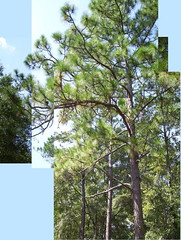
George Monbiot writes in the Guardian about how
We have allowed developers to rob us of our village green:
Build loose suburbs carved up by busy roads and without green spaces and you help to create a population of fat, lonely people plagued by criminals. Build dense, leafy settlements with mixed uses, protected from traffic, and you help to create safe, fit and friendly communities.
Here’s one picture of what a fit, safe and functional community might look like. There’s nothing radical or new about it: similar developments have been built for centuries (and most are now monopolised by the rich). Houses or apartment blocks are built densely around a square of shared green space. It is big enough for playing ball games, but without fixed goalposts, allowing children and adults to define the space for themselves. It could contain trees; perhaps rocks or logs to climb on. There might be a corner of uncut meadow, or flowerbeds or fruit bushes. The space will work best when it is designed and managed by the people who live there.
Most important, the houses face inwards, and no cars are allowed inside the square: the roads serve only the backs of the buildings. The square is overlooked by everyone, which means that children can run in and out of their houses unsupervised, create their own tribes and learn their own rules, without fear of traffic accidents or molesters. They have a place in which to run wild without collecting asbos.
(An asbo is an Anti-Social Behaviour Order, like a citation
for disturbing the peace.)
 Suppose instead of walling off a detention pond and letting it grow weeds and snakes we made most of it high enough not to flood and let it grow trees, flowers, grass for children to play on, and maybe even vegetables.
That wouldn’t cost much more to develop.
The detention pond pictured is in the
Hamilton Pointe development,
where several residents told me they had no place to play football
or basketball.
If the detention pond was turned into a village green, they would have a place
for sports.
Suppose instead of walling off a detention pond and letting it grow weeds and snakes we made most of it high enough not to flood and let it grow trees, flowers, grass for children to play on, and maybe even vegetables.
That wouldn’t cost much more to develop.
The detention pond pictured is in the
Hamilton Pointe development,
where several residents told me they had no place to play football
or basketball.
If the detention pond was turned into a village green, they would have a place
for sports.
-jsq
 Re: Forester R. Wayne Bell’s points of May 20, 2010. (Hi Wayne; I’ll get those dibbles back to you soon.)
Re: Forester R. Wayne Bell’s points of May 20, 2010. (Hi Wayne; I’ll get those dibbles back to you soon.)
 As a tree farmer myself, I know the pulpwood market is down in Georgia due to the recession and foreign competition. I’d like to be convinced that biomass is the new market we need, but the more I look into it,
the more obfuscation I encounter.
As a tree farmer myself, I know the pulpwood market is down in Georgia due to the recession and foreign competition. I’d like to be convinced that biomass is the new market we need, but the more I look into it,
the more obfuscation I encounter.




